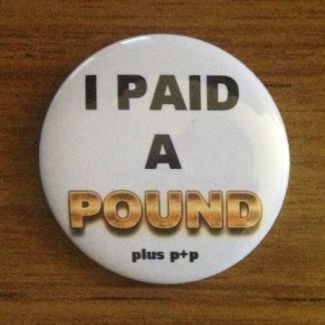I went to the Titanic Exhibition at the Science Museum this afternoon. I thought it would be interesting, though there was a part of me that was cautious that the exhibit might be raking over the graves of thousands of dead. Should the artefacts have been left in their watery tomb, or was there some justification for recovering these items for public display.
I reasoned that all museums display plenty of objects that have been taken from graves (and sometimes even include the bones and mummified bodies of the dead), and I myself have briefly worked as an archaeologist and been a party to the digging up of such grave goods, so there shouldn't really be any moral difference, just because only a century (almost) has passed, rater than a millennium or two.
Also it would be really cool to see some stuff that had been touched by dead people. And parts of the ship that had taken them to their doom.
Yet I have to say that this was different than a usual macabre museum exhibition. Maybe it's because the Titanic has been so commercialised (which made the whole exhibition seem like it was an exercise in making money rather than being of historical interest) or maybe because I felt a bit like someone slowing down to look at a car wreck. Once you'd got over the intial excitement of thinking, "Wow, look a bit of the actual Titanic" there was a feeling of uneasiness about the rest of it. Possibly because the objects recovered aren't Egyptian grave goods, but extremely familiar objects like dishes and suits and dollar bills. There wasn't any history in this. It was just looking at stuff that had been last touched by a dead person 90 odd years ago.
Some of the items had stories to them and there was an attempt to make us think about the personalities and the tragedies involved. But it seemed disappointingly slight and suspiciously expensive. OK, so it must have cost a lot to recover this stuff, but I got the feeling that the stuff had only been recovered for commercial purposes.
This suspicion was confirmed as I left the exhibition and turned immediately into a shop selling Titanic souveniers.
One of these was a certified fragment of coal that had been brought up from the Titanic, at a cost of £15.99. That didn't seem right to me, to be selling something that had been in the wreck. But it wasn't as bad as all the other gawdy items on display, including a replica Titanic life-belt. Once again history and suffering has become entertainment. What kind of a person wants a replica Titanic life-belt and where do they put it? Can it really be used for anything but some slightly sick purpose.
The James Cameron IMAX film I'd seen before going round had a chilling (and possibly staged) sequence when the crew came up from the Titanic to hear the news of the World Trade Centre attacks (I say staged because there was a rather dubious piece of footage where one of the crew celebrated the rescue of some robot cameras by stating the date and time of 6am, September 11th, 2001 - it seemed a highly unlikely thing to do. Even to give the date and time at all, but also the year. Such a thing could only be significant in hindsight. I had a creeping suspicion that Cameron had recreated this moment to add poignancy, which seems doubly wrong).
For a while the team felt their film was nto important anymore. There was obviously some added weight to the realisation, because here they were filming in the grave of thousands of people, whilst back home, thousands of people had been killed in another tragedy. They managed to find the strength to continue and that's probably good. Despite some mawkishness and inappropriate musical choices and the fact that the film seems more concerned by the potential loss of their remote control cameras than they do for the loss of life in the Titanic or the World Trade Centre (one of the cameras is used to rescue the others - cue "Just the Two of Us", as if these bits of machinery are alive), the shots of the wreck are very impressive and bring home the scale of the tragedy.
However, as me and my friend left the exhibition and entered the gift shop one couldn't help but be struck by the wrongness of commercialising this event in such a tacky way.
In ninety years time will there be a World Trade Centre exhibition, showing some of the possessions of the dead, and selling bits of rubble in boxes to the great grand-children of the victims?
I think there probably will be exactly that. But it seems inappropriate doesn't it? Not that an undeniably historical event should be commemorated, but that it should be so brazenly used to make money.
Maybe I'm thinking about it too much. Or maybe a plaster tube filled with jelly beans with s rubber toy version of the Titanic on the top is not the way to remember the dead.

